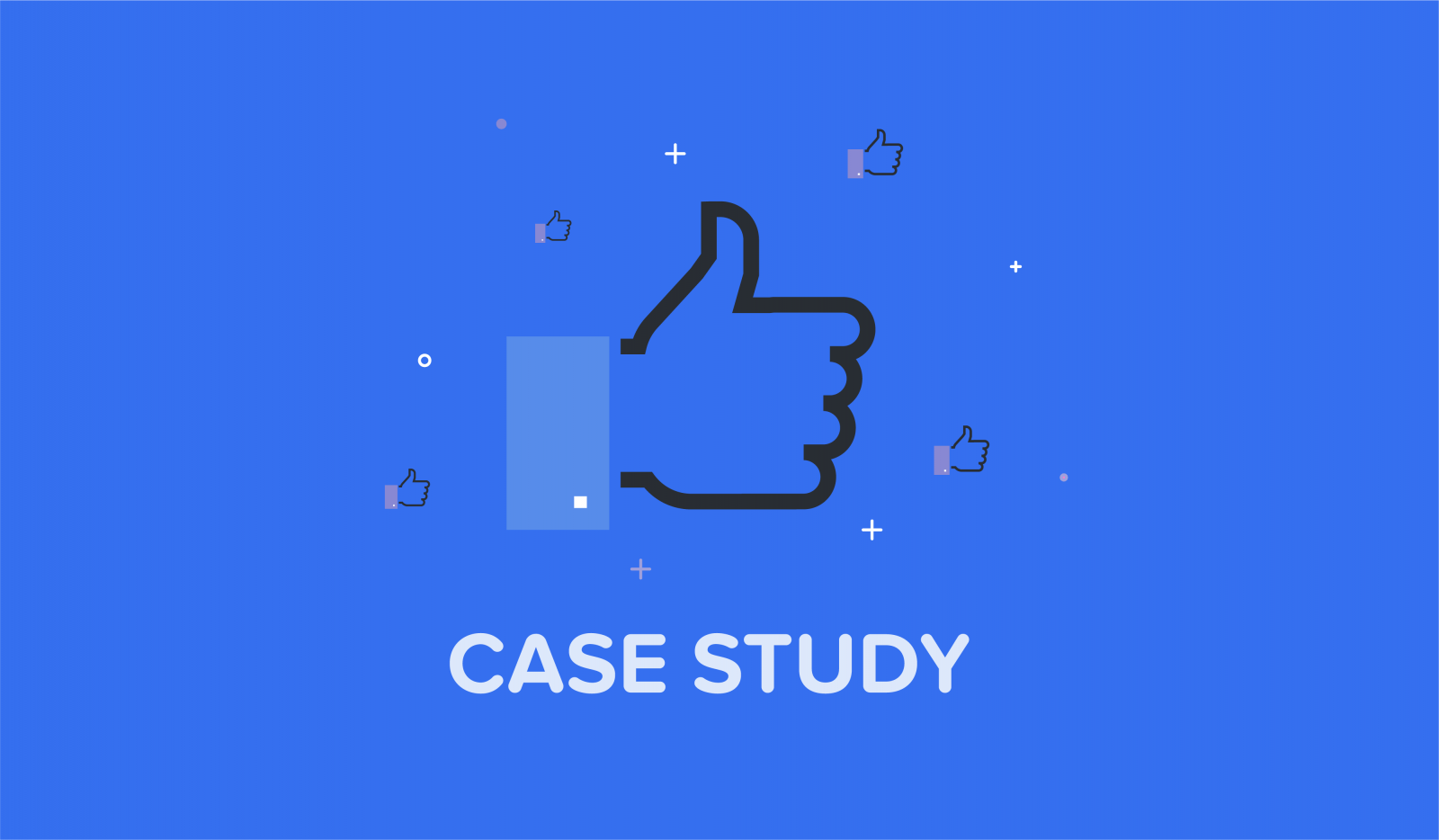Lucia explains how she helped Dronetech founder Richard Potts build a Facebook following of over 100k in just a few months.
Which social media channels should you use to market your business? If the headlines are anything to go by, you should be all over Instagram and Snapchat.
Remember when your parents used to ask you, “If your friends jumped off a cliff, would you jump too?” However annoying this question was as a trouble-making teen, it’s a useful way to approach social media marketing.
It’s always wise to keep on top of trends and, by all means, experiment. But when you’re a startup or entrepreneur with limited time (and funds), having fingers in too many pies is when things can get messy. Until you’ve grown to a size where you can employ a dedicated marketing team, it’s better to concentrate your efforts on one or two channels, and do them well.
I learned this valuable lesson working for Dronetech, a B2B publishing and events company that builds communities and facilitates business connections in the emerging drone technology industry. Next year, Dronetech will be hosting one of Europe’s biggest and most groundbreaking drone technology tradeshows – a pretty impressive feat for a small startup!
The secret to Dronetech’s success? Well, we put a lot of it down to our 108k-strong Facebook community.

I first joined Dronetech as a Marketing and Editorial Intern, before taking on the position of Digital Experience Executive a few months later. Working alongside Richard, Dronetech’s founder, Gemma, our Digital Experience Director, and Charlotte, our Graphic and Web Design Executive, I was responsible for our social media and content marketing efforts.
As a fresh-faced English graduate who had spent the last three years reading dead poets, being given the reigns over a social media page about flying robots was a baptism of fire!

But exploring unfamiliar territory is part and parcel of startup life; and the same can be said for nailing social media. As a team, we tested and re-tested the waters until we found a growth strategy that worked for us.
In this post, I’m going to talk you through the lessons we learned along the way.
Why Facebook?
Dronetech started out at a time when digital marketing was being rocked by the increasing popularity of visual content. A new generation of tech-savvy young millennials were migrating away from established channels, like Twitter and Facebook, to new kids on the block, Snapchat and Instagram. And lots of brands were following suit.
As a startup, it’s tempting to latch onto what is current or trendy.

But we chose Facebook (alongside Twitter and LinkedIn) as our main social channel.
Here’s why:
1. Facebook is still the world’s most popular social media site, with over 1.7 billion users at the time of writing.
2. Facebook passed the tipping point between organic and paid reach a long time ago. It’s not just a place to tag your friends in memes, but an established venue for businesses to market themselves (more on this later).
3. Facebook offered us the most appropriate and easiest way to represent our brand. As a B2B events company, we were more likely to be sharing industry-related news than taking pretty pictures!
4. Facebook was where our target audience – mature professionals, not twenty-something hipsters – hung out.
So how did we do it? 5 steps to growing your Facebook following
Step 1: Find your niche
The idea behind Dronetech was to showcase the benefits that drones could bring to a variety of industries. Through our events and social pages, we would create spaces where anyone with an interest in drones could find useful information and create new contacts.
To get people to come to our party, we had to offer our guests something new and exciting. We achieved this through some stealthy market research.
Set up Facebook’s ‘Pages to watch’ tool
Facebook Insights provides you with a variety of data to help you manage and grow your page. One of the first steps we took in utilising this resource was setting up the ‘Pages to watch tool’.
We used ‘Pages to watch’ to make a list of the top drone-related pages on Facebook (i.e. our competitors). We then studied them carefully to see what we could do differently.
Drone technology was just beginning to shed its associations with military warfare and Big Brother-style surveillance and be seen as something positive. The consumer drone market was booming and, as a result, a number of drone racing fan pages and tech forums for hobbyists had popped up on Facebook.
What we noticed was that these pages were presenting drones merely as toys. We, on the other hand, wanted to promote drone technology as something fun and accessible, but also revolutionary.
Once we started posting content that reflected these values, we saw from ‘Pages to watch’ that we were growing at a much faster rate than our competitors. In other words, we were giving our audience something they couldn’t find anywhere else.
Take advantage of trending hashtags
Luckily for us, the hashtag #dronesforgood had surfaced on social media, so it was the ideal time to swoop in and build a Facebook page dedicated to this concept. We made sure to include this hashtag whenever we shared a relevant post, so that our target audience could easily find us through Facebook’s search feature.
Use eye-catching graphics
Once we hand our angle, we translated it into the design of our page by opting for colourful, quirky graphics over the stock drone photos our competitors were using.
Your cover photo can play an important part in communicating your brand message. It is likely to be the first thing someone notices when they click on your page, so it’s worth investing in a good designer if you don’t have the skills yourself.

Dronetech’s Facebook cover photo, designed by our graphics guru, Charlotte.
Takeaway:
If you’ve started a business, you’ve probably already spotted the gap in the market that you’re going to fill with your skills, service or product. This should be reflected in your Facebook page. Work out how to stand out from the crowd – whether that’s through visual branding, the content you deliver, or simply taking the time to reply to every single person that comments on your posts.
It’s essential to do your research and think about what you can bring to the table. This doesn’t necessarily mean doing something no one has done before; perhaps you can just do it better!
Step 2: Craft a winning content strategy
Once we’d established our USP, it was time to deliver the goods.
We divided our content strategy into two parts:
1. Content curation
As you’re already a fan of Quuu, chances are you know the value of sharing other people’s content.
Not only is it an excellent way to stay on good terms with a tonne of important contacts (tag the source or author in your share text and watch the good business karma come back around!), but it also positions you as a thought leader in your chosen industry.
Use a scheduling tool to line up daily posts
As Dronetech’s social media manager, I used Google Alerts to get up-to-date news on everything drone-related sent to my inbox each morning. I would then pick out the best stories and schedule them to be posted at optimized times on Facebook (using either Facebook’s scheduled posts or Buffer), giving our audience a consistent stream of informative and engaging content throughout the day.
Tip: Even when you’re sharing someone else’s content, you still need to come up with the headline. An attention-grabbing post caption can be the difference between 0 likes and 100 likes. We quickly learned that short, snappy copy, as well as a sense of fun and humour, made our audience more likely to engage with a post:

If only there was a service that curated content for me, I’d have had more time to spend on the second part of our strategy:
2. Content creation
By collecting the best content from around the web in one place, we’d set ourselves up as an authority on drone news, earning our audience’s trust and respect. This gave us a huge advantage when it came to sharing our own content.
Thanks to our ever-growing audience, we were able to secure press releases, interviews and features from some of the most notable names in the drone world – after all, who doesn’t want their work to be seen by tens of thousands of people?
Organise your blogging activity
We set up a WordPress blog to publish this content and created an editorial calendar to manage our writing and publishing schedule.
A social media manager’s role is a mashup of editor and marketer, and as both will tell you, planning ahead is key. A content calendar is a great way to organise your ideas, manage campaigns and create a seamless flow of posts. It’s also worth investing in scheduling tools like Buffer and Hootsuite – real lifesavers when you work for a startup and have a gazillion other things to do.
Tip: Use calendars and schedules, but don’t be a slave to them.
One lesson myself and Gemma learned when crafting Dronetech’s content strategy was that it pays to be both nimble and spontaneous. For example, if we spotted a piece of breaking news, we would post it live to ensure our audience heard it from us first.

Or, if a post didn’t do as well as we’d hoped, we might adjusting our strategy accordingly. For example, we had scheduled in a listicle post once a month in our content calendar to tie in with our monthly editorial themes.
The first listicle got very high levels of engagement:

But when we repeated the same format for another topic, we didn’t get the same results:

When a post does really well, it’s tempting to try and replicate that success by using the same template over and over. But you don’t want to be a one-trick pony; your audience will get bored.
So, instead, we kept on pushing ourselves to experiment with new types of content, such as infographics:

More recently, Dronetech has adopted the strategy of slow blogging:
“Slowing down content delivery is a new discovery, but one I’m very happy about! We now follow a ‘slow blogging’ attitude where we don’t have content targets or put something on the page every day. We simply share the best piece of content if we can find it – and if we can’t we don’t. We’ve seen much higher levels of engagement for each post as a result.” – Richard
Takeaway: Share a mixture of your own and other people’s content to build authority and retain a captive audience. Push yourself outside of your comfort zone and constantly experiment with new types of content. And remember: less is sometimes more!
Step 3: Cough up!
So let’s go back to point two of why we chose Facebook in the first place:
Facebook passed the tipping point between organic and paid reach a long time ago. This means that it’s not just a place to tag your friends in memes, but an established venue for businesses to market themselves.
Facebook now has so many users that it has become saturated with content. How many of us actually scroll through and read everything that’s in our newsfeeds? It’s virtually impossible because there’s just too much material to sift through.
So while there are several things you can do to increase your organic reach, as a marketer, you have to give your audience a gentle nudge in the right direction.
Use Facebook ads
Facebook ads gives businesses the opportunity to promote their page and posts with custom ads targeting specific audiences. This was an essential part of increasing Dronetech’s brand visibility, allowing us to grow an active and engaged audience across the globe.
The real trick to effectively using Facebook ads was driving down the cost per acquisition (CPA) of new Facebook likes while balancing quality of engagement.
“How ‘real’ the likes are is a huge measure of the value of a page” – Richard
To begin with, we made the mistake of prioritising quantity over quality. At one point, we were getting 2000 likes a day but engagement actually dropped. Once we realised we had to start honing our audience demographic, we nailed that balance. Growth slowed, but engagement improved and today stays in line with the overall size of the page, i.e. more likes = more engagement.
Experiment with A/B testing
The second important lesson learned was that the ads themselves play a vital role in attracting the right people. We A/B tested ads where possible and looked at which ads were not only getting the most signups for the lowest CPA, but also which ones resulted in better quality likes.
Takeaway: Facebook is an advertising channel – think of it as this century’s answer to TV and radio. A business selling gardening gloves probably wouldn’t air an advertisement on a late-night radio programme specialising in acid house. Targeting the right audience has always been a key component to success in traditional advertising and the same rules apply to Facebook.
Step 4: Get nerdy
Marketing is becoming increasingly data-driven. As a social media marketer, there’s no excuse not to use data; it’s handed to us on a plate by Facebook and Twitter in the form of built-in analytics dashboards that are both accurate and easy to use.
Two ways to use Insights
At Dronetech, we took advantage of Facebook Insights and used these metrics to form the backbone of our content strategy. Insights helped us in two very important ways:
1. It told us when to post: we posted at peak times when we knew our audience would be online, giving our content maximum exposure.
2. It told us what to post: we paid close attention to post engagement (likes, reactions and shares) to find out what type of content our audience interacted with the most. For us, video content proved to be hugely popular, so we set about curating more of it from external sources, as well as creating our own animations to promote Dronetech Europe.
Takeaway: Use Insights as a way to get to know your audience’s habits and preferences to see better results for your content. Engagement, not reach, should be how you measure the success of your content strategy. Facebook’s super-sophisticated news feed algorithm is, in fact, based on engagement: when a post has lots of ‘likes’, clicks and shares, Facebook will bump it up and share it with a larger portion of your audience. Once again, it’s best to focus on quality, not quantity.
Step 5: Tell everyone about it!
Getting all those likes on Facebook was not something we achieved purely from within Facebook. To get people to visit your Facebook page (and hopefully like it), you need to let them know it’s there in the first place.
While Facebook ads are a powerful way to promote your page, it’s surprising how many businesses forget that there are plenty of ways to do this outside of Facebook – for free.
We made sure to slip in a link to our Facebook page at every opportunity – whether in an email conversation, an email signature, buttons on our websites or in good, old-fashioned print on business cards and merchandise.

And at this point, it’s also worth asking the following question: what did getting 100,000 likes on Facebook do for Dronetech?
Well, firstly, a lot of those likes converted into sales and leads for Dronetech Europe.
Secondly, it gave us enough kudos to secure some of the biggest names in tech as interviewees on our blog and keynote speakers at our event. Drop the 100k bomb, and you’ll find all of a sudden people are very keen to be your friend!
Takeaway: Publicise your Facebook page and don’t be too shy to brag about its success!
Quuu is not affiliated with or sponsored by DroneTech – we just loved this success story! What are your strategies for boosting Facebook followers? Let us know in the comments.






Nice post, I’d love to hear about how much you spent in budget to grow the likes. Were you able to link the Facebook ads to ROI?
Why is the engagement on the Dronetech page so abyssal? I got a page with 6k followers and I often get 80 organic likes on posts… This smells fake followers so badly haha
Hey 🙂 the screenshots from this article were from various stages of Lucia’s time at Dronetech, while it was still growing.
Agreed. I’ve got a page with 12k and get 30-40 likes and seen by 2k people… certainly smells like fakes.
Wow, what a fabulous article! = ) Thanks for this clear, edgy and informative Facebook Marketing tactics… I really love to read refreshing blogs like this =)
I neeԁed to thank you for this good rеad!! I absolᥙtely enjoʏeԀ every bit of it.
I’ve got үou bookmarked to check out new things
you post…